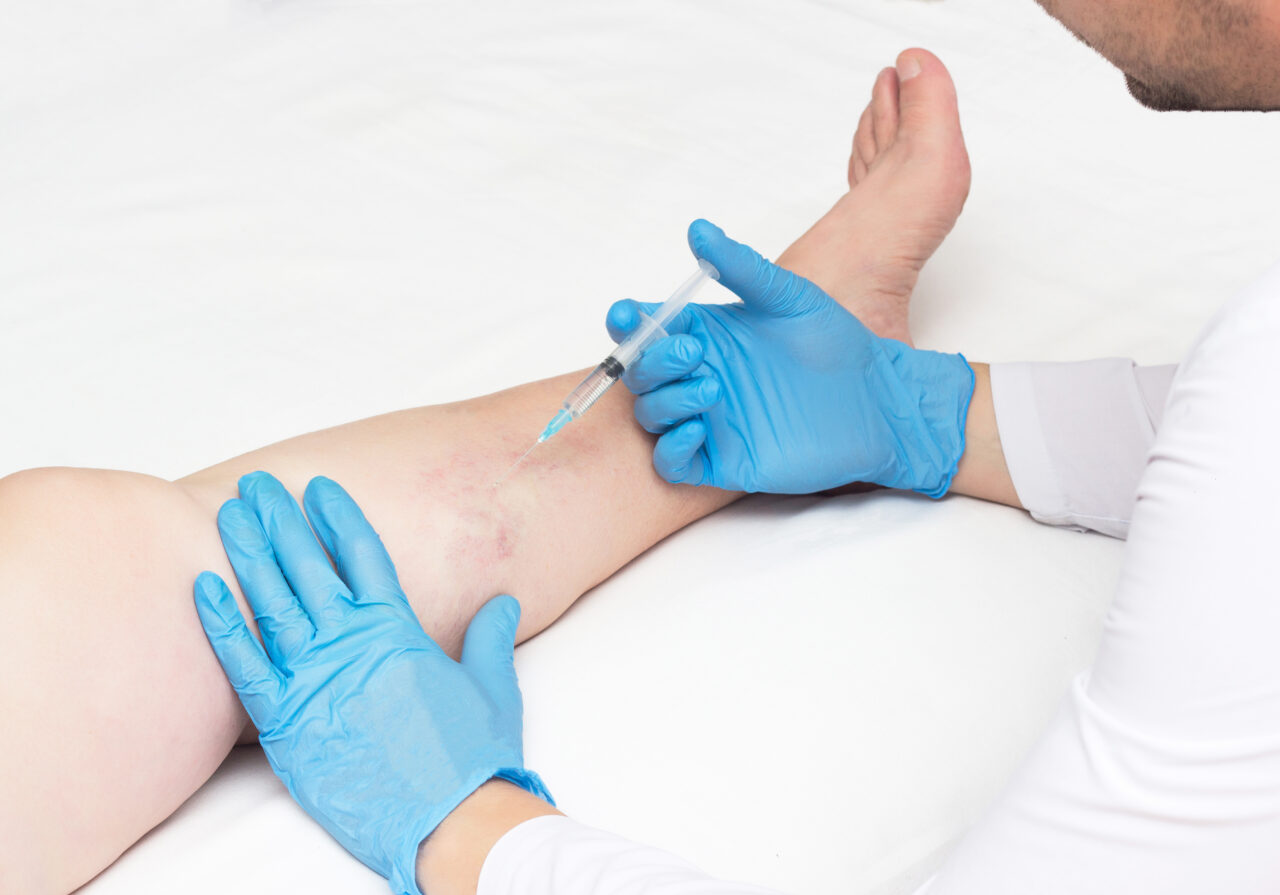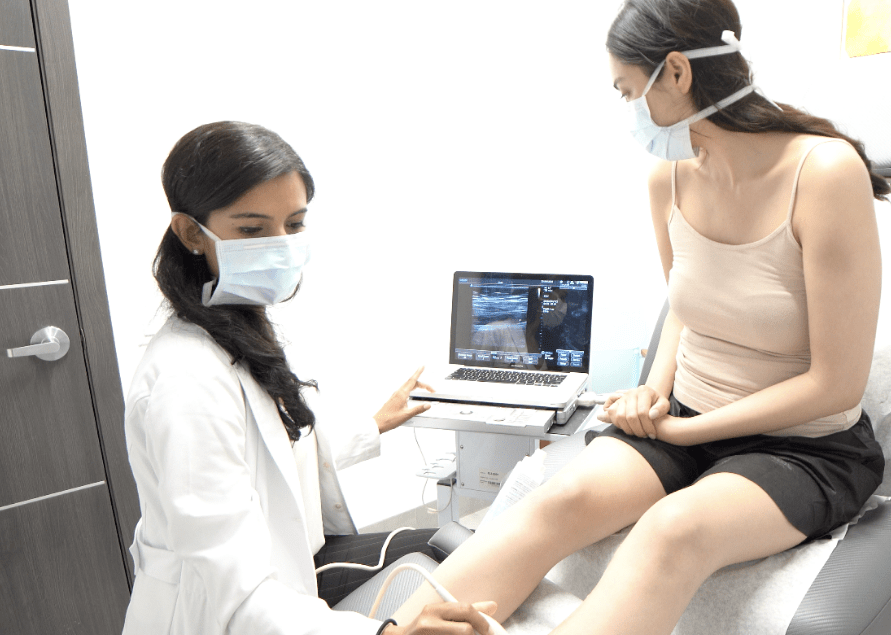How does Sclerotherapy Work as a Treatment Option for Varicose Veins?
Varicose veins, those unsightly, swollen, and twisted veins that commonly appear in the legs, can be more than just a cosmetic concern. They often come with discomfort, pain, and a host of other symptoms. Fortunately, there are various treatment options available to address varicose veins. In this comprehensive guide, we will delve into the workings of sclerotherapy as a treatment option for varicose veins and explore other treatments while understanding the role of a vein doctor.
Understanding Varicose Veins
Before we dive into the details of sclerotherapy, let's establish a solid understanding of varicose veins. These enlarged and twisted veins occur when the valves within the veins weaken or fail, causing blood to pool and veins to stretch. Varicose veins can affect anyone but are more common in older adults and, interestingly, in women due to hormonal changes during pregnancy and menopause.

Common Symptoms of Varicose Veins
Varicose veins are not just a cosmetic issue; they often manifest in a range of uncomfortable symptoms, including:
- Visible Veins: The most apparent sign of varicose veins is the presence of visibly swollen and twisted veins, typically in the legs.
- Pain and Aching: Many individuals with varicose veins experience pain, aching, and throbbing sensations in the affected area, especially after extended periods of standing or sitting.
- Leg Heaviness: Varicose veins can lead to a feeling of heaviness or tiredness in the legs.
- Swelling: Swelling in the lower legs and ankles can occur due to fluid buildup associated with varicose veins.
- Itching and Discomfort: Some individuals may experience itching and general discomfort around the affected veins.
Now that we have a clear picture of varicose veins and their symptoms, let's explore the various treatment options available, with a focus on sclerotherapy.
What are the Treatment Options for Varicose Veins
Sclerotherapy: A Deep Dive
Sclerotherapy is a minimally invasive procedure designed to treat varicose veins and their smaller counterparts, known as spider veins. This procedure involves the injection of a special solution, called a sclerosant, directly into the affected veins. The sclerosant irritates the inner lining of the vein, causing it to collapse and eventually fade away. Blood flow is rerouted to healthier veins, relieving the symptoms of varicose veins.
The beauty of sclerotherapy lies in its simplicity and effectiveness. Here's how it typically works:
- Consultation: Your journey with sclerotherapy begins with a consultation with a vein specialist or a qualified healthcare provider. They will assess your condition, discuss your medical history, and determine if you are a suitable candidate for the procedure.
- Preparation: On the day of the procedure, you will be asked to wear loose-fitting clothing, and the area to be treated will be cleaned and sterilized.
- Injection: A fine needle is used to inject the sclerosant solution into the affected veins. Multiple injections may be required to treat all affected veins.
- Compression: After the injections, compression stockings or bandages may be applied to help with blood circulation and to minimize bruising and swelling.
- Recovery: Sclerotherapy is an outpatient procedure, and most individuals can return to their daily activities immediately. However, strenuous exercise and prolonged periods of standing or sitting should be avoided for a few days after the treatment.
- Results: Over the following weeks, the treated veins will gradually fade away, leaving behind smoother and more aesthetically pleasing skin. Some individuals may require multiple sessions for optimal results.
Sclerotherapy is generally considered safe and effective. It is an excellent option for those with small to medium-sized varicose veins and spider veins.

Endovenous Laser Ablation (EVLA)
Endovenous laser ablation is another minimally invasive treatment for varicose veins. During this procedure, a laser fiber is inserted into the affected vein, delivering laser energy to close it off. Like sclerotherapy, EVLA reroutes blood flow to healthier veins, providing relief from varicose vein symptoms. EVLA is particularly effective for larger varicose veins.
Radiofrequency Ablation (RFA)
Radiofrequency ablation is similar to EVLA but uses radiofrequency energy to heat and close the affected vein. It is a safe and effective option for treating varicose veins, often providing immediate relief from symptoms.
Lifestyle Changes
In addition to medical treatments, lifestyle modifications can play a crucial role in managing varicose veins. Maintaining a healthy weight, regular exercise, and elevating the legs when resting can help alleviate symptoms and prevent the worsening of varicose veins.
What Is a Vein Doctor Called?
A vein doctor is a medical specialist who specializes in the diagnosis and treatment of venous disorders. These healthcare professionals are also known as phlebologists. They receive specialized training in the field of vascular medicine, equipping them with the knowledge and skills to diagnose and manage various venous conditions, including varicose veins.
When to See a Vein Doctor
If you suspect that you have varicose veins or are experiencing symptoms such as pain, swelling, or discomfort in your legs, it's advisable to schedule a consultation with a vein doctor. A vein doctor will conduct a thorough evaluation, which may include a physical examination and diagnostic tests such as ultrasound imaging. Based on the findings, they will recommend the most suitable treatment option for your specific condition.
Conclusion:
Varicose veins can be more than just a cosmetic concern; they often bring discomfort and pain. Fortunately, numerous treatment options are available to address varicose veins, ranging from minimally invasive procedures like sclerotherapy, EVLA, and RFA to innovative techniques. Choosing the right treatment should be done in consultation with a vein doctor or specialist, as they can provide expert guidance and tailor the approach to your unique needs.
Sclerotherapy, in particular, stands out as a highly effective and straightforward option for treating varicose veins and spider veins. By understanding the science behind these treatments and seeking the expertise of a vein doctor, you can take proactive steps toward healthier, more comfortable legs and a better overall quality of life. Don't let varicose veins hold you back; explore your treatment options and embark on the path to improved vascular health today.
Comments
Post a Comment